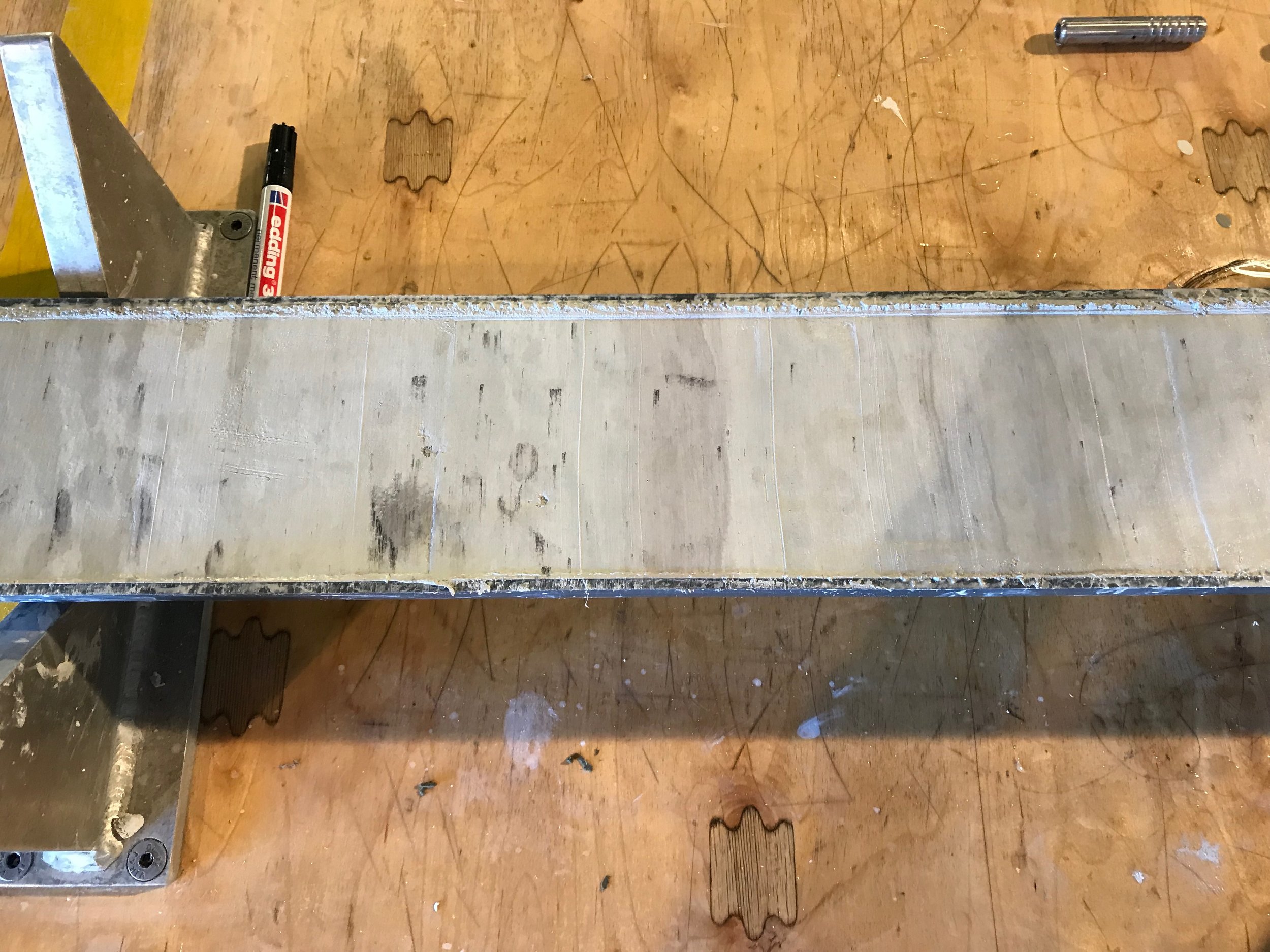
Geochemistry from the Neogene to the Neolithic
Active Projects
Pacific Ocean circulation in the Pliocene
Marine sediment core from the North Pacific ocean. Photo credit: Jordan T. Abell.
Changes in ocean circulation can have important impacts on regional and global climate. During intervals in Earth’s past where the climate was generally warmer than today, such as the Pliocene Epoch ~3-5 million years ago, it has been suggested that the pathways for ocean currents in the Pacific Ocean, particularly related to the deep ocean, were different compared to modern observations. Several studies have posited that during the Pliocene, surface water in the subarctic North Pacific was transported to the deep Pacific Ocean, in a similar fashion to the North Atlantic today. Because the Pliocene is an analogue for potential future climate change, past shifts in North Pacific Ocean circulation are important for our understanding of the impacts of anthropogenic climate change.
I, along with collaborators at George Mason U. (Mariano Remírez, Natalie Burls, Geoffrey Gilleaudeau, Linda Hinnov) and U. Arizona (Kaustubh Thirumalai, Diane Thompson), have a new project investigating how the waters of the North Pacific moved during the warmer-than-present Pliocene. Specifically, we are using inorganic tracers of marine sediment porewater oxygenation, ocean export productivity, and water mass circulation to determine whether intermediate or deepwater formed in the open-ocean subarctic North Pacific during two key intervals: the early Pliocene and mid-Pliocene Warm Period.
Link to NSF-MG&G grant funding this project.
Tracing the westerlies in a variety of climate states
The prevailing mid-latitude westerly winds, known as the “westerlies”, are integral to regional and global climate. Over the last several decades, the location and strength of the westerlies has been changing, likely because of anthropogenic climate change. In order to better understand this phenomena, and how it could impact various components of the climate system, my collaborators and I use sediments from several ocean basins to reconstruct the position and intensification of the westerly winds during periods in Earth’s history with climate states different from today, such as the Last Glacial Maximum (~18-24 thousand years ago), the Last Interglacial (~115-130 thousand years ago), and the Pliocene (~3-5 million years ago. I provide details on several ongoing projects below.
1) Alongside Jessica Tierney at U. Arizona and Gisela Winckler at Lamont-Doherty Earth Observatory, I am using marine sediment cores from the Tasman Sea and a combined organic and inorganic geochemical approach to reconstruct the Southern Hemisphere westerly winds over the last ~150 thousand years.
Link to NSF-OCE Postdoctoral Research Fellowship Award funding this project.
2) Gisela Winckler and I are currently using a suite of marine sediments from the North Pacific Ocean and inorganic proxies for sediment fluxes, dust deposition, and ocean export productivity to constrain the North Hemisphere westerlies over the last ~150 thousand years.
Link to NSF-P2C2 grant funding this project.
3) Our recent work in the North Pacific indicates that during the warmer intervals of the Pliocene, the westerlies, globally, were located closer towards the poles, and were weaker, than during the colder intervals afterwards. We explain these changes in the context of global temperature gradients and ice sheet evolution. If the Pliocene is predictive of modern global warming, it seems likely that the movement of the westerlies towards the poles observed in the modern era will continue with further human-induced warming. We are continuing to produce Pliocene paleoclimate records to further constrain the westerly winds during this warmer-than-present period of Earth’s past.
Dust storm leaving China and passing over the Korean Peninsula and Japan on its way to the North Pacific Ocean. Photo credit: SeaWiFS Project, NASA/Goddard Space Flight Center, and ORBIMAGE.
Characterizing the dustiness (and climate more broadly) of East Asia through the Cenozoic
Accumulation of late Pleistocene dust on the Chinese Loess Plateau near Xi’an, China. Photo credit: Jordan Abell.
My collaborators and I use a combination of terrestrial and marine sediment archives, along with a plethora of proxies, to reconstruct various components of the East Asian climate system. Our work spans the Paleogene to present, and regions of China, Mongolia, and the North Pacific Ocean. Some examples of our work can be found below.
Feedbacks between the atmosphere and evolving arid landscapes
Unconsolidated gravel pavements in the Hami Basin, China. Photo credit: Alex Pullen.
The accurate characterization of near-surface winds is critical to our understanding of past and modern climate. Dust lofted by these winds has the potential to modify surface and atmospheric conditions as well as ocean biogeochemistry. Stony deserts, low dust emitting regions today, represent expansive areas where variations in surficial geology through time may drastically impact near-surface conditions.
Together, Alex Pullen, Stefan Rahimi, Zachary Lebo, and I use the Weather Research and Forecasting model over arid regions, currently focusing on the western Gobi Desert, to demonstrate previously undocumented processes between wind-driven landscape evolution and boundary layer conditions.
Hami Basin WRF-Chem modeling paper here
Hami Basin WRF modeling paper here
Complementing this modeling approach, I work with Dehai Zhang and Guocan Wang at the China University of Geosciences to reconstruct wind erosion in the Hami Basin in the Plio-Pleistocene utilizing geological, geomorphological, and geochemical techniques.
Reconstructing early animal management and site use intensity in archaeological sites
Reconstructions of buildings thought to exist during the Neolithic occupation of Aşıklı Höyük in modern-day Turkey. Photo credit: Güneş Duru.
Over the last several decades, there has been an increasing interest in the application of geochemistry to archaeological sites, with studies focusing on a range of topics including use of space and identifying specific archaeological deposits. However, one area where the use of geochemical approaches, such as the elemental and isotopic composition of archaeological materials, is lacking relates to the timing and extent of animal domestication, site use, and sediment diagenesis. My colleagues and I apply these techniques, along with simple mass balance models, to various archaeological sites to better constrain how people interacted with their surroundings. For information on collaborators, see my field work page. Current projects include:
1) Diagenesis of archaeological sediments at the Neanderthal site of Pech de l’Ave IV, modern-day France .
2) Animal domestication and site use intensity at the Neolithic site of Aşıklı Höyük, modern-day Turkey.




